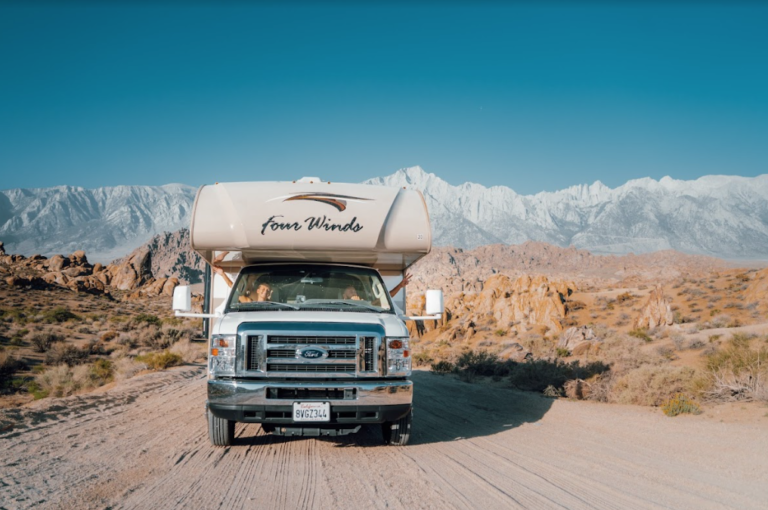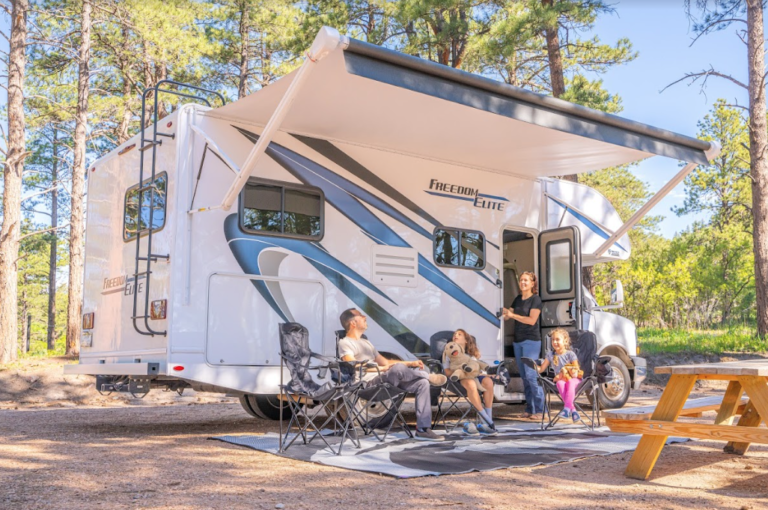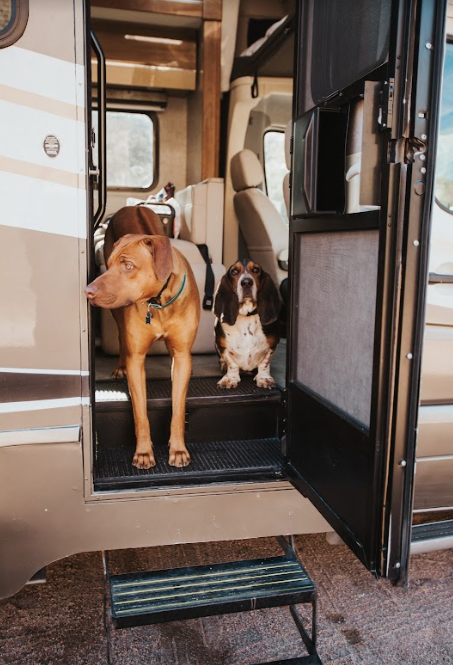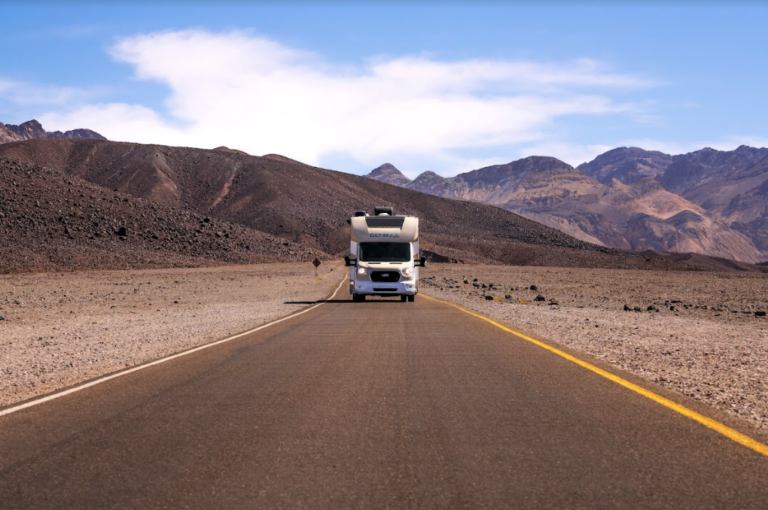
When it comes to the reasons that camping in an RV is more comfortable than camping in a tent, RV plumbing is perhaps one of the biggest.
Having the ability to wash your hands with warm water, clean your dishes with hot water, have a toilet that flushes and of course, being able to take a hot shower in your own RV, are all luxuries in comparison to camping in a tent and having to use the campground facilities. These luxuries are available because of your RV plumbing system.
At first, the system that delivers the water to meet your needs can seem complicated. You have both hot water and cold water. You have fresh water, gray water and black water. There’s a water pump and a water heater. There’s a fresh water tank and a city water connection. There are RV plumbing fixtures and RV plumbing fittings. The list goes on and on.
As an RV owner, it is incredibly important to understand your RV plumbing system and the RV plumbing parts that it includes, so let’s explore some parts of the RV plumbing system.
We’re going to focus on how RV plumbing works utilizing the freshwater tank. This means that the freshwater inlet valve is our starting point. Water enters the system through the freshwater inlet valve to fill up the freshwater holding tank.
From there, a 12-volt RV water pump carries water from the freshwater tank into the plumbing system. This water pump is what gives the RV plumbing system pressure so that when you turn on a faucet or the shower, you get running water.
RV Water Pumps

These little pumps are the lifeline of the RV plumbing system. If you think of the water in your RV like blood in the human body, the water pump is the heart. It pumps the water and keeps things moving.
An on-demand water pump is an excellent feature that most modern motorhomes utilize. This means that you can keep the water pump turned on, but it will only run when it senses that the water system needs pressure, which is the case whenever you run water through a faucet or flush your RV’s toilet. Once it pumps enough water from the freshwater tank into the pipes to pressurize the system again, an on-demand water pump will stop running.
RV Plumbing Fixtures
Once your RV’s water system has been pressurized by the RV water pump, you now have access to running water through the many RV plumbing fixtures that are available to you. Your RV has one or more sinks in it, with faucets that you can turn on to get running water to wash your hands or to do your dishes. Your RV has a shower faucet that brings you running water to wash yourself. Many RV’s also have outdoor showers that can be used for cleaning yourself, your equipment or maybe your dog. There are even some RV’s that are equipped with ice- making machines that utilize water from the freshwater tank.
RV Water Tanks
Speaking of tanks, it is important to know that your RV has three different water tanks. We’ve already mentioned the freshwater tank, which is filled with clean, fresh water and we’ve mentioned the black water tank, which gets filled with waste from your toilet.
The third tank in your RV is the gray water tank. The gray water tank gets filled with water that runs down the drain when you shower, do dishes or wash your hands.
The gray and black water tanks will also each have an RV plumbing vent. This vent is a pipe that runs upward, from the top of your gray and black water tanks, to vent out the roof of your RV. It may sound strange that these tanks are air-vented to the roof of your RV, but be assured that having the smells, that come from the gray and black water tanks, vent out of your RV in this manner is far superior than having those smells vent back into your coach!
RV Water Heaters
Having any running water is one great thing about RV’s, but of course, there are some tasks that are more pleasant to complete if you have, specifically, hot water and that’s where the RV water heater comes in.
An RV water heater will typically have a 6-gallon or 10-gallon tank which is plumbed in as part of your RV plumbing system. Cold water enters the tank at the bottom through tubing from the fresh water tank. This cold water then fills the tank, which in turn pressurizes the hot water system in your RV.
Once the water heater tank is full, the water heater uses either propane or electricity, depending on the type of water heater, to heat the water in the tank. Now, when you turn on the hot water valve on your faucets or shower, your RV plumbing system pulls water directly from the water heater tank.

RV Plumbing Pipes or Tubing
RV plumbing systems most often use some type of plastic tubing. The specific type may vary, but your RV likely has either ABS pipe or PEX tubing for water delivery to your RV plumbing fixtures and toilet.
PEX tubing is becoming more popular, and if your RV was manufactured in the last 10 years, your RV plumbing system probably contains PEX tubing, because it is lightweight and more flexible than metal or ABS pipe options.
PEX tubing uses metal RV plumbing fittings to connect two separate lengths of tubing together. The fitting is pushed into the end of each hose and then a clamp or crimp ring is used to tighten the connection.
There are also several different types of RV plumbing fittings that may be used to turn water on and off, to connect tubing around corners and to connect tubing to RV plumbing fixtures.
You never know when an RV plumbing repair is going to be needed. Whether it be an over-pressurized system or a pipe that broke during a winter freeze, breakdowns in your RV plumbing system may happen and you should be prepared for them.
It is a good idea to carry along with you a few different-sized lengths of whatever type of pipe or tubing your RV uses, in case of a break while you are camping. Additionally, make sure you have a few of the RV plumbing fittings, that are most commonly used in your RV, on hand as well.
The pipe, tubing and fittings used in RV plumbing systems are not unique to RV’s. While any of these items can be purchased from the RV plumbing supply section of your local RV service center, you should also be able to find them at any national hardware chain or local hardware store.
RV Water Line Fittings & Repairs

There are two types of water lines:
- RV copper line, these are usually found in older model vehicles.
- RV plastic line, which is the material of choice for modern vehicles. (PEX as discussed above)
RV water lines can freeze, which causes them to split. This results in a cut in the line, and these cuts are what leak water.
The water line in your RV was installed with some slack, so if you have a split line, you can simply cut out the part with the slit, then rejoin the two ends with a water-line fitting.
If you need to repair a larger section, simply buy a water line that is the same length (as that you intend to cut), and the appropriate RV water line fittings.
Plastic water lines can be easily cut using a knife. Copper lines can be cut using a tubing cutter. This is the best way to ensure that you do not deform the tube.
Only cut out the damaged part, and ensure that you have a similar-sized replacement.
RV Water Line Fittings
If you aren’t sure what fittings to buy, take the piece of damaged line that you cut, to the hardware store.
A compression union fitting is the best to use, when re-attaching two ends. You will need a wrench to tighten the fitting and secure it properly.
Elbow water line fittings trap water, which may freeze and defrost, creating cracks. Elbow fittings may either be pipe thread, or compression style.
Pipe-threaded fittings should be wrapped in Teflon, before being screwed into place. This will prevent leakage.
RV Water Line Maintenance
Wondering what you should be doing to take good care of your RV water lines? Remember these things:
Purchase an RV Water Pressure Regulator
Make sure you are using a water pressure regulator every time you connect to a water hookup. This will protect your RV waterline tubing from bursting due to high water pressure.
Invest in an RV Water Filter
An RV water filter will help clean the water before it enters your rig’s water lines. This will keep the lines clean and free of weird smells.
Sanitize RV Water Lines
In addition to using a filter to keep thing clean, it’s a good idea to sanitize your lines from time to time. Our instructions on how to do this can be found here.
We hope all that information didn’t drain you too much and instead left you feeling piped out excited!
*This post contains affiliate links. RVshare may receive compensation if you make a purchase after clicking on a product link.






